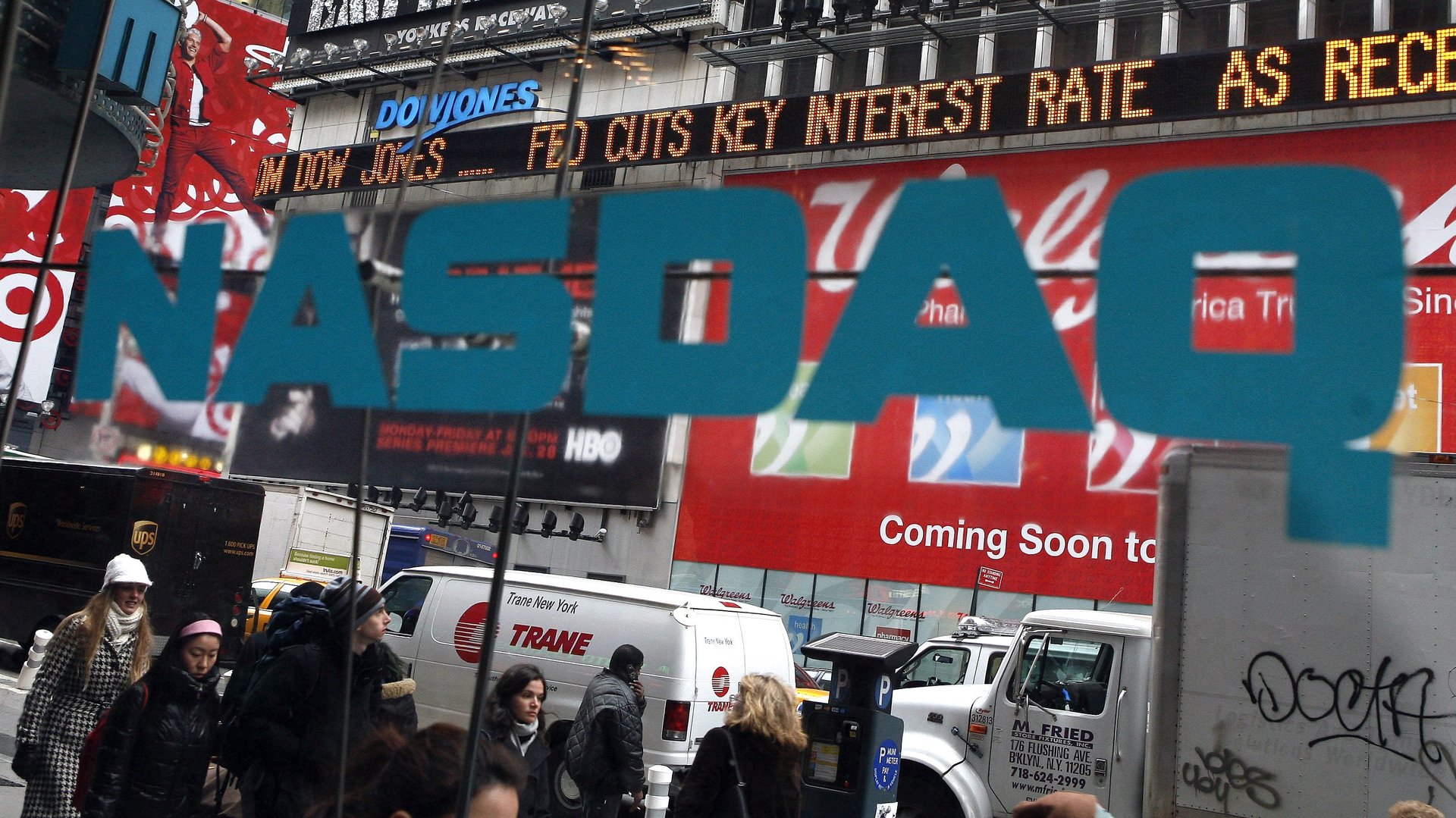The company that’s LMAO on its way to the stock exchange
The prospectus held no punch line. But the company was LMAO all the same.


The prospectus held no punch line. But the company was LMAO all the same.
On Friday, LMF Acquisition Opportunities filed to raise $75 million in an IPO on Nasdaq. Its Class A shares, the prospectus proposed, would trade under the symbol LMAO. With an equally straight face, the prospectus named the sponsor company: LMFAO Sponsor, based out of Florida.
These companies are affiliated to LM Funding America, a 12-year-old financial services firm that manages the collection process for delinquent home debt. After the filing, shares in LM Funding America rose 160% on Nasdaq.
Novelty stock symbols aren’t new. Nasdaq, in fact, has its own web page listing its 10 favorites—among them, the Asian Tigers Fund’s GRR and Franklin Resources’ BEN. “When I was at the Securities and Exchange Commission, there were a few marijuana-related penny stocks with clever symbols,” Joshua White, a one-time financial economist at the SEC and now an assistant professor at Vanderbilt University, said. “For example, Canopy Growth Corp trades on the Toronto Stock Exchange under the ticker WEED.” Exchanges are free to reject symbols that companies propose. White recalled the instance of Furr’s/Bishop’s, which was denied its request to be listed as FBI.
A company picks such symbols, White said, to signal its creativity or to avoid mistaken identity—although admittedly neither of these reasons should seem to matter too much to LMAO, a special purpose acquisition company, or SPAC. (“If this SPAC successfully acquires a company, it will likely change its ticker to reflect that,” White said. “Hopefully they do not acquire a Really Old Failing Lodge or something similar.”) This is a fine balance; a novelty symbol may too often tip over into gimmickry. “Perhaps a clever symbol is a sign of desperation rather than intelligence,” the economists Alex Head, Gary Smith, and Julia Wilson wrote in a paper in 2009.
But research also suggests that these symbols may do more than provide a brief, bright moment during a trading day. In their paper, Head, Smith, and Wilson put together a “clever-ticker portfolio,” tracked the returns of these stocks between 1984 and 2005, and saw that these stocks outperformed the market. In 2006, a study by two Princeton psychologists found that, in the days following IPOs, stocks with easily pronounceable names tended to outperform those whose names were more of a mouthful. “If you started with $1,000 and invested it in companies with the 10 most fluent names, you would earn $333 more than you would have had you invested in the 10 with the least fluent,” Adam Alter, one of the study’s authors, said at the time.
Another study, published in the Journal of Financial Markets in 2016, analyzed the “likability” of 2,395 ticker symbols, comparing symbols like ACE, LOV, and HOT (rated “likable” by undergraduates serving as guinea-pigs) with those such as CYH, TGC, and UTI (rated “unlikeable”). The more likable the ticker symbol, the more valuable the firm, the researchers found. The paper suggested several theories to explain this. Perhaps older companies had snaffled the “likable” symbols early and, as a result of their longevity, became more valuable? Perhaps likable, pronounceable symbols drew more investors, improved the liquidity of the stock, and enhanced their value?
Scientists often turn to behavioral economics to understand the appeal of “likable” symbols. It offers ready evidence of a particular human tendency: when we’re swamped with information, and when we need to make decisions in an uncertain environment, we aren’t always able to be rational. Instead, we use “unconscious shortcuts or heuristics,” as the authors of the 2016 paper wrote. We sound out stock symbols in our heads, recognize them as words, chuckle at them—and perhaps then hit “Buy.”